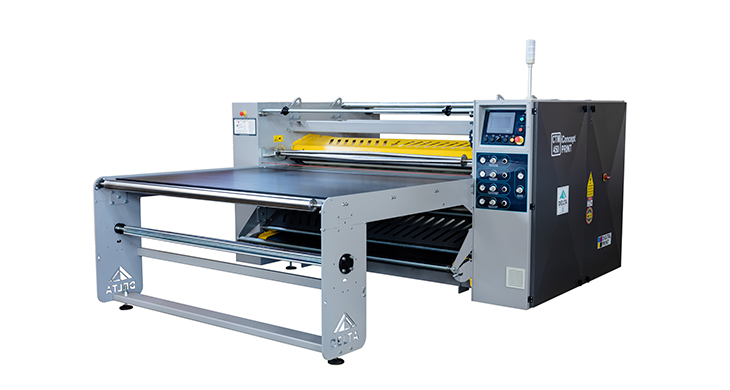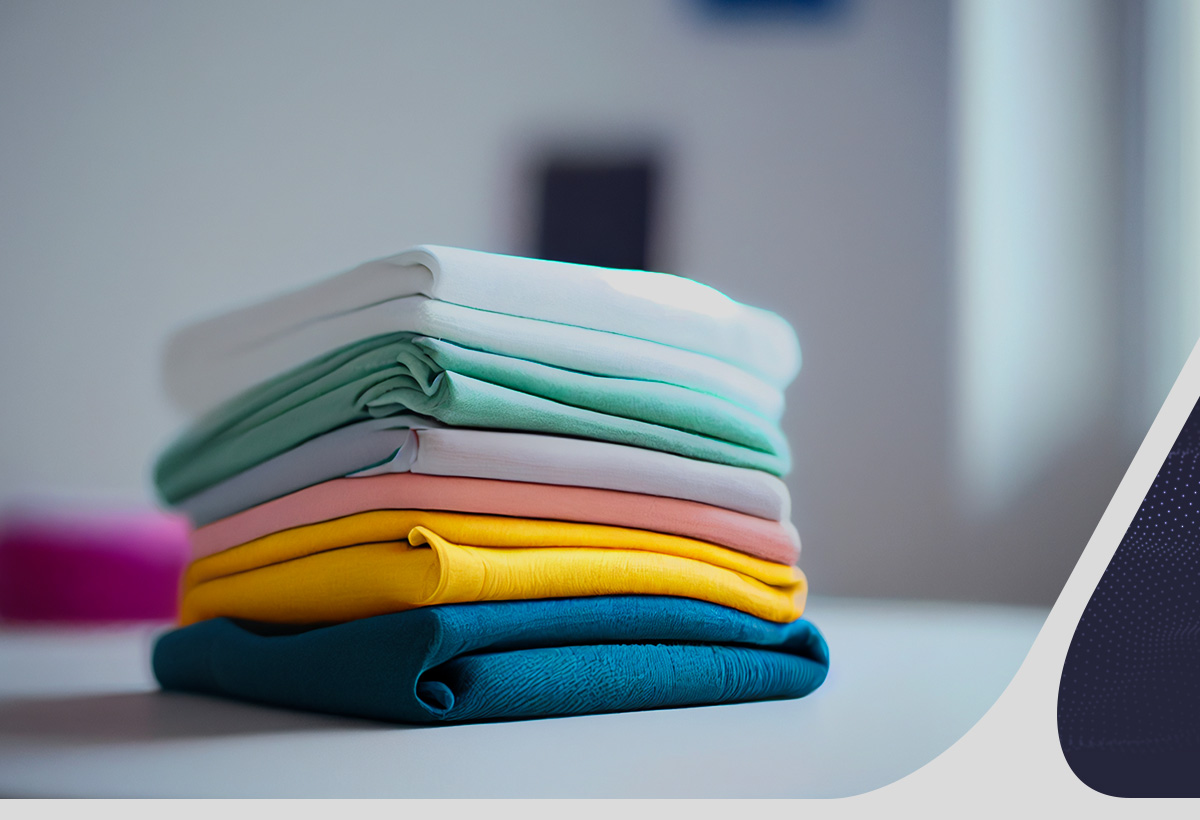It’s normal for doubts to arise about fabrics for sublimation. After all, not all of them are suitable for this process due to the difficulty of ink absorption.
Hence, the most suitable ones are those that react better to steam and heat, as well as sublimation ink.
To understand more about the subject and get to know the most suitable fibers for the technique, keep reading!
Let’s go?
What are the main fabrics for sublimation?
There is a certain recommendation regarding fabrics for sublimation. After all, this printing process is somewhat complex. Considering that the ink is transferred to the fabric through the application of heat and pressure.
In other words, this is a printing process that occurs during the textile finishing stage.. Here, the ink goes from solid state directly to gaseous state, without passing through the liquid state. That’s why the term “sublimation.”
The method results in vibrant, durable, and high-quality prints, because the ink fuses directly with the fabric fibers. And sublimation is commonly used in the production of personalized garments. Which is currently a major consumer trend.
According to a study cited by the Terra Portal, 83% of consumers want personalized products. And they are willing to pay, on average, up to 25.3% more for customization.
In any case, it is possible to say that the most suitable fabric for sublimation is polyester. This includes those with a high polyester blend and concentration.
These are the most suitable for sublimation because they absorb sublimation ink better. Therefore, they guarantee the efficiency and duration of the transfer, generating better print quality.
Based on this context, below we list some examples of fabrics for sublimation. See below!
1. Polyester (PP)
Polyester (PP) is one of the most recommended fabrics for sublimation. This is a synthetic material with high sublimation absorption capacity. Being 100% polyester, it better resists wrinkles, shrinkage and fading.
Not to mention that polyester is also a light and breathable material, which makes it comfortable to use in clothing and other sublimated products.
In short, PP Polyester ensures that sublimated prints maintain quality for a long period of time.. Therefore, it is responsible for generating high quality results for the final product.
Remember! The higher the polyester concentration, the better and more effective the dye transfer will be.
2. Polycotton (PC)
Polycotton (PC) is a type of fabric with a mixture of fibers. Here, the percentage of polyester is, on average, 65% and cotton is 35%.
In this mixture, the polyester present in the fabric is responsible for permanently fixing the sublimatic dye, while the cotton provides softness to the fabric.
This combination of synthetic and natural fibers offers good durability, resistance and comfort to the fabric. Therefore, it is a popular choice for a variety of textile products, such as:
- Polo and long-sleeved t-shirts;
- Blouses;
- Caps;
- Ecological bags;
- Cloth hats;
- Tote bag, among others.
3. Polyviscosis (PV)
Polyviscose (PV) is also one of the sublimation fabrics from a blend. In this case, the average proportion in the composition is usually the same as the previous one. Only the fibers change, for example, which, here, are polyester and viscose.
This, which is also a synthetic fiber, provides a soft and shiny touch to the fabric.. The material has great similarities with PC, due to its resistance and comfort.
However, the viscose present in polyviscose has a greater absorption capacity absorb sublimation ink, which results in improved printing quality. Therefore, it can be used in:
- Towels and sports uniforms;
- Flags and banners;
- Bags and backpacks;
- Cushions and aprons;
- Fabric napkins and handkerchiefs,
- Dresses and skirts, and more.
4. Polyester Lycra
Polyester Lycra is a synthetic fabric, also known as elastane or spandex. For this reason, it is widely used and recognized for its elastic properties.
This is another sublimation fabric that guarantees a durable and vibrant print. However, here, the pieces fit the body comfortably.
Therefore, it is widely used to add aesthetic value to personalization. and differentiation to sportswear, for example. As well as swimwear, lingerie and items that require greater comfort and mobility.
5. PET
PET is made from polyester, which is why it is one of the fabrics recommended for sublimation. It is a specific form of polyester (polyethylene terephthalate) which can, and should, be used beyond the manufacture of plastic bottles.
PET fabric is often used in sublimation due to the characteristics and properties that make it suitable for this process. For example:
- Moisture resistance and durability, which helps maintain the quality of the sublimated image for longer;
- Excellent ink receptivity thanks to the smooth and uniform surface;
- Sustainability, as PET fabric is made from recycled material, such as plastic bottles;
- Fast drying, ideal for large-scale production. After all, it reduces the waiting time between printing and drying of the sublimated piece.
It is important to highlight that, according to a survey cited by Meio e Mensagem, 86% of Brazilian consumers are willing to prioritize sustainable brands and stores.
Therefore, PET is an excellent fabric option for sublimation as it not only reduces the environmental impacts of the textile industry, but also meets the demands of today’s consumer.
Read also: The fashion industry and the environment need to go hand in hand!
Some points of care and attention during the sublimation process

In general, it is possible to state that natural fiber fabrics are not the most suitable for sublimation. Such as silk, cotton and wool. Here, the paint does not adhere in the same way.
But, in addition to them, it is possible to mention some fabrics that should be avoided when sublimating. They are:
- Fabrics withwaterproof coatings;
- Very thick fabrics or fabrics with very irregular textures that compromise print quality;
- Fabrics that cannot withstand high temperatures, as sublimation requires heat for the ink to set on the fabric.
Therefore, the ideal is to ensure that fabrics for sublimation are synthetic and with the highest percentage of polyester in the composition.. This is due to the cellular and chemical structure of polyester, which contributes to the efficiency of the process.
In addition, light and smooth fabrics are more suitable for better print quality. In any case, it is important to check the composition of the fabric before performing sublimation to ensure best results.
It is also important to be careful with certain points to ensure quality results. That is:
- Before sublimating, make sure the surface of the material is clean and free of dust, dirt or residue that could interfere with the transfer of the paint;
- Ensure correct fixation of the image on the material during the sublimation process;
- Correctly adjust the temperature and pressing time according to the material to be sublimated;
- Check that the pressure is correctly adjusted according to the material and image to be sublimated.
Here, it is worth highlighting the benefits of digital stamping! This method contributes to the sustainability of sublimation. This is because it does not require paper and avoids environmental contamination, as the inks used are water-based and do not contain heavy chemical components.
Furthermore, the efficiency, productivity and agility of digital printing contribute to production that mitigates waste, being healthier and more sustainable.
Read also: Digital vs. conventional printing: learn about the main differences
How to guarantee the quality of sublimation?

It’s not enough to just worry about the fabrics for sublimation! It is essential to invest in intelligent textile machines that will contribute to the quality, efficiency, profitability and even the sustainability of the process.
As is the case, for example, with the Sublimation Calender, from Delta Máquinas Têxteis. This solution’s distinguishing feature is the heating system that guarantees equalization and stability of the cylinder temperature and greater use of the circumference of the thermal cylinder.
Not to mention that this machine allows you to work on rolls or cut pieces. Everything with standardization and automation, whatever the need.
It also has:
- Chrome-plated cylinder for greater productivity and stability;
- Highly durable 100% Nomex felt;
- Adjustments of footage, temperature, speed, etc.;
- Recipe configuration via HMI;
- Heating system with automatic startup;
- Cooling system with automatic stop;
- NoBreak system preventing losses in the event of a power outage;
- Paper separator cylinder (prevents shading during printing, but has nothing to do with speed);
- Fixed unwinder and rewinder (reduce setup time);
- Robust structure with greater durability.
All of this with national assistance, which generates affordable costs for parts and labor!
So, guarantee the success of sublimation now with the support of Delta’s textile machines! Get a quote!



